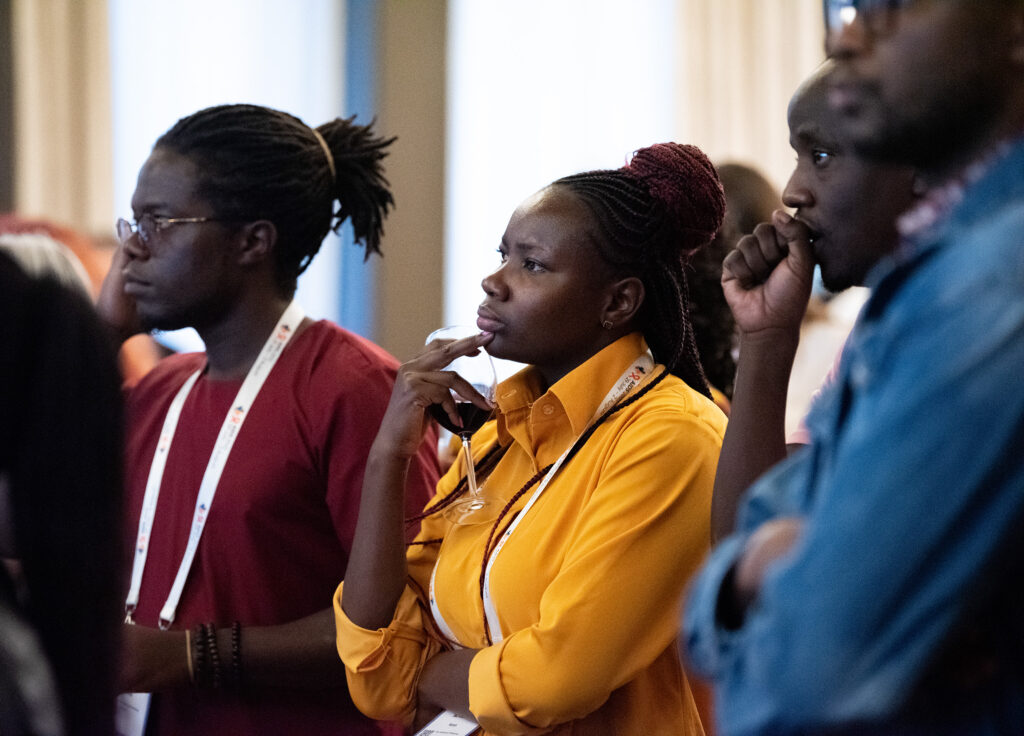Photography 101: Best Practices for NGOs

Guidance From Lacey, Content Director at GCS
We live in a highly visual world — people are drawn to sights that catch their eye, evoke emotion, or inspire curiosity. Now that most of us carry a camera in our pockets, it’s also more difficult than ever to stand out in the sea of visual content. That’s why no effective communications strategy is complete without a plan to maximize the storytelling and brand-building capabilities of photography.

Above: Photo taken by Lacey Johnson for a Glassroth Creative Strategies client at the 2022 International AIDS Conference in Montreal.
For NGOs and nonprofits, photography is a powerful tool that can make or break a project, event, or campaign. Organizations can use photography to:
7 Benefits of Quality Photography
- Tell Powerful Stories: Photography allows NGOs to visually communicate their mission, impact, and the stories of the people they serve.
- Advocate & Raise Awareness: Compelling visuals capture attention and help raise awareness about social issues, allowing NGOs to advocate for change and engage the public in their cause.
- Fundraise: High-quality images can evoke empathy and emotion, encouraging individuals, foundations, and donors to contribute financially to support NGO’s initiatives.
- Document Impact in Grant Reports: Photographs provide a tangible way to document and showcase the real-world impact of an NGO’s projects, illustrating positive changes and progress.
- Build Trust: Authentic and well-crafted photographs build trust by providing transparency and allowing stakeholders to see the reality of the NGO’s work.
- Boost Social Media Engagement: Visual content is highly shareable on social media platforms, helping NGOs reach a broader audience and engage with supporters, volunteers, and partners.
- Enhance Media Coverage: Compelling visuals increase the likelihood of media coverage, helping NGOs secure more visibility and recognition for their initiatives.
Hiring a Professional vs. DIY
Does your organization need a professional photographer for every project? Not necessarily. In some cases, staff-sourced photography or stock photography may meet your needs. However, investing in high-quality photography for major projects can certainly go a long way towards building your organization’s visual brand identity. Find more tips for hiring a professional vs. choosing DIY photography below.
Hiring a Professional Photographer
Hiring a professional photographer will ensure that your organization receives high-quality photographs that are capable of accurately and uniquely representing your organization and its work. Of course, this can also be an expensive option, so it’s important to hire the right person in order to get the best possible return on your investment. Consider these best practices when hiring a professional photographer:
- Look for someone who has a portfolio of high-quality images
- Search for a photographer who is locally based (if possible)
- Find a photographer who is already knowledgeable (or at least willing to learn) about the issues facing the communities you serve (i.e., stigma, discrimination, political concerns, etc.)
- Only hire photographers who are prepared to approach subjects with sensitivity and follow ethical storytelling best practices
Do It Yourself: Best Practices for Staff and Volunteers
Asking existing staff or volunteers to take photos can be a more economical option, but it’s important to ensure individuals understand a few basic best practices. Staff or volunteers should follow these guidelines when taking photos:
- Use the best available camera or smartphone
- Shoot your team in action:
- Delivering services
- Speaking to an audience
- Interacting positively with the community
- Engaging in advocacy activities
- Don’t shoot:
- Rooms/meetings where it’s unclear what’s happening
- Poorly posed group photos with people looking away, not smiling, etc.
- Blurry photos (clean your phone’s lens!)
- Photograph people who benefit from your services:
- Take respectful photos that treat subjects as individuals, not stereotypes
- Before taking someone’s picture, always ask for permission and explain how the photo will be used (Organization’s website? Social media? A grant report? Etc.)
- Carry a photo release form for subjects to sign
- Give subjects who want privacy the option to be photographed anonymously
- For photo permissions at larger events, consider:
- Including a photo release (that people can easily opt out of) in your program registration or event sign-in. Those who opt out can wear a special name-tag or sticker to clearly indicate their photo should not be taken.
- Place a sign at the entrance to an event or meeting
indicating photos will be taken there and shared.
The bottom line: If your nonprofit or NGO isn’t regularly creating and utilizing photography, you’re missing a valuable opportunity to share your impact with the world.
